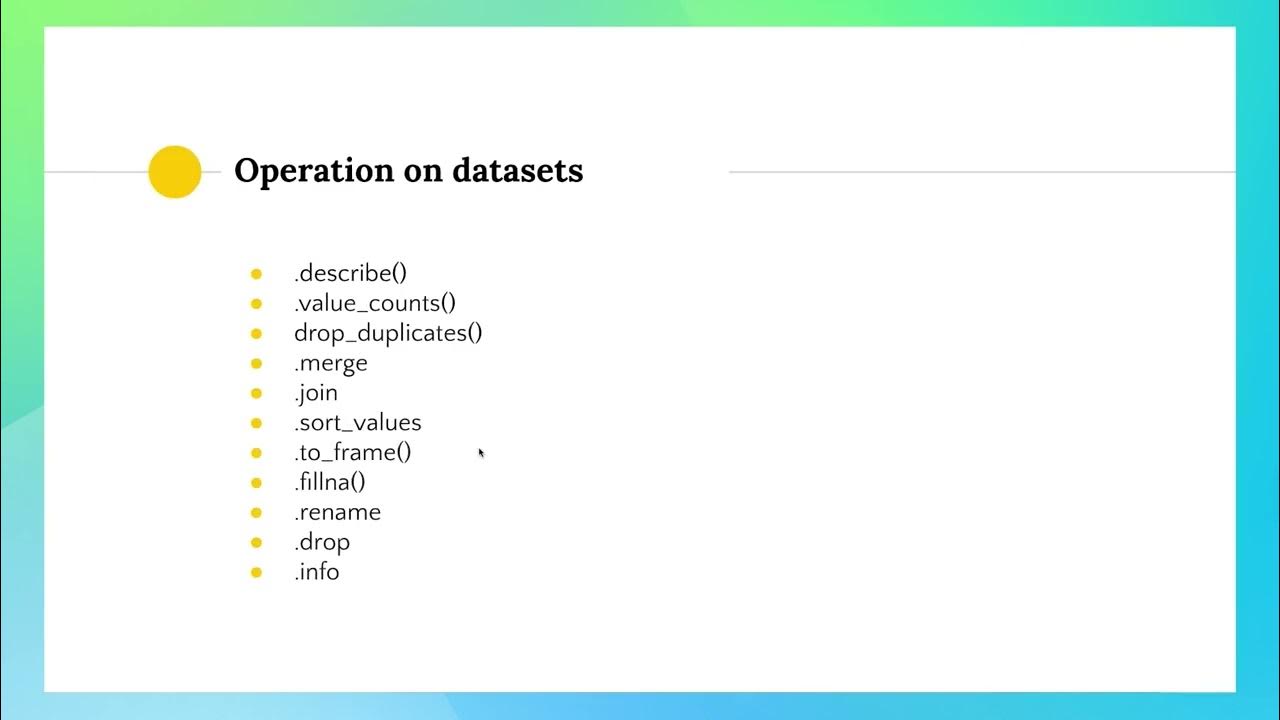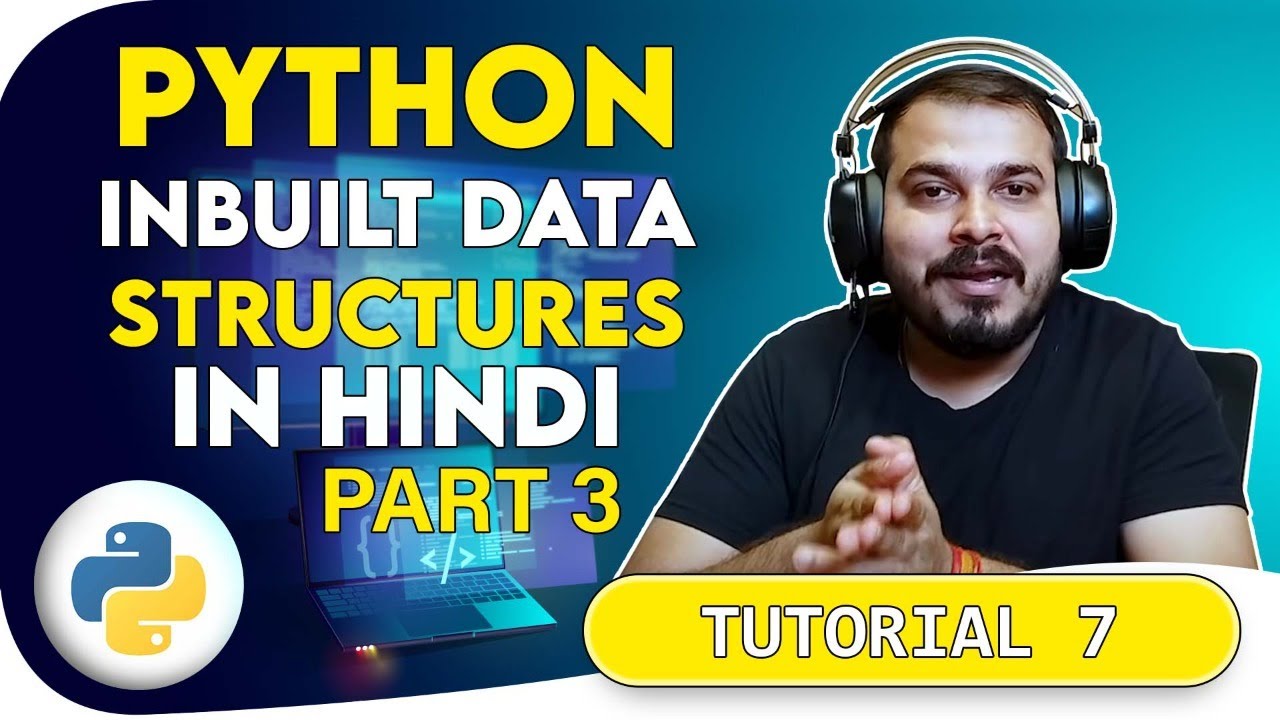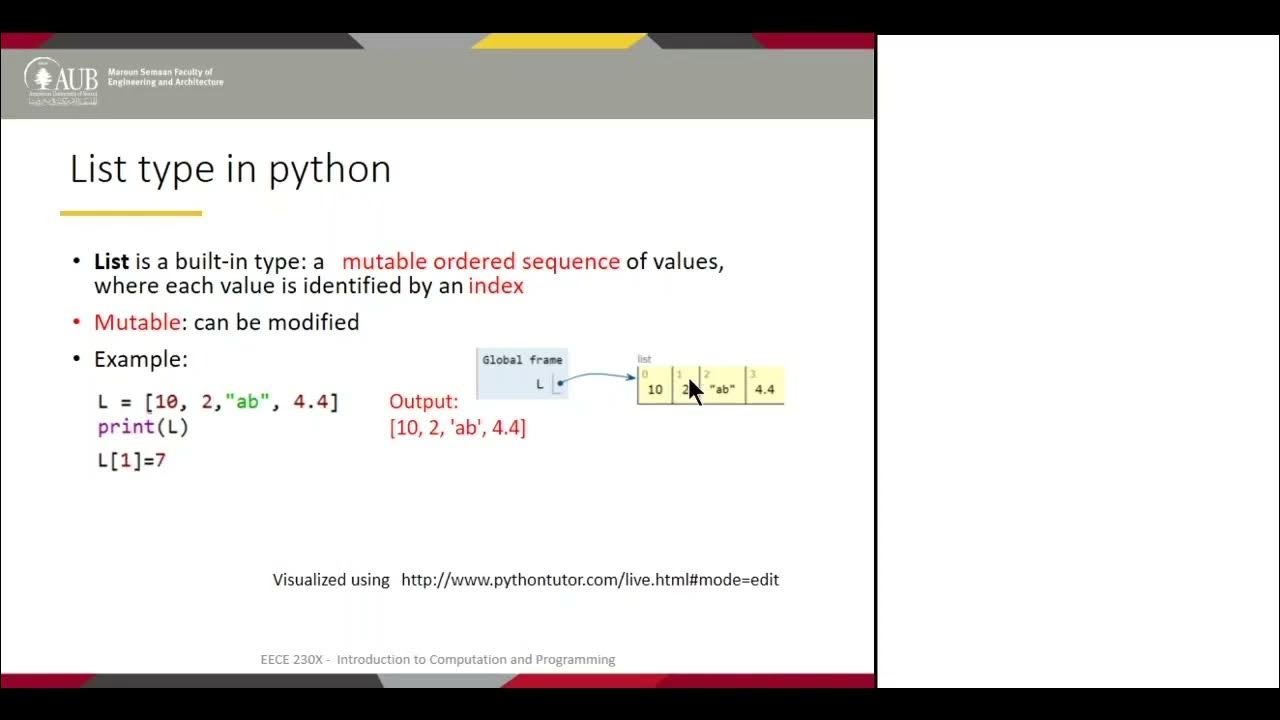Sequence data part 3
Summary
TLDRThe video script is a comprehensive tutorial on Python's sequence data operations. It covers slicing techniques for lists, strings, tuples, and bytes, explaining how to extract elements using start, stop, and step indices. The tutorial also explores concatenation and multiplication of sequences, emphasizing the distinction between mutable and immutable data types. It concludes with practical examples of applying these operations to manipulate and analyze sequence data effectively.
Takeaways
- 😀 The lecture introduces the concept of slicing in sequence data, emphasizing its utility in accessing and manipulating parts of a sequence.
- 🔍 Slicing in Python uses the syntax `sequence[start:stop:step]`, where `start`, `stop`, and `step` are optional parameters defining the slice's beginning, end, and increment, respectively.
- ✂️ The slice object is created without modifying the original sequence, allowing for efficient data handling and extraction of subsequences or elements.
- 🔢 Default values for slicing are `start=0`, `stop=end of sequence`, and `step=1`, which means the slice includes elements from the beginning to the end, one by one.
- 🔄 Negative indices in slicing refer to positions from the end of the sequence, with `-1` being the last element.
- 📝 For non-sequential data like dictionaries, slicing is not applicable as it requires an ordered data type to function.
- 🔄 Slicing can be performed on lists, tuples, and strings, allowing for the extraction of sublists, sub-tuples, and substrings respectively.
- 🔢 The lecture demonstrates how slicing can be used to perform operations like string repetition and list multiplication using the `*` operator.
- 📚 Examples are provided to illustrate the practical application of slicing, such as extracting specific parts of a string or list based on given indices and conditions.
- 💡 The importance of understanding slicing is highlighted for efficient data manipulation, especially when dealing with loops and large datasets.
Q & A
What is the primary topic discussed in the script?
-The primary topic discussed in the script is the concept of slicing in sequence data, including strings, lists, tuples, and bytes, along with their applications in Python programming.
What does the term 'slicing' refer to in the context of the script?
-In the context of the script, 'slicing' refers to the operation of extracting a portion of a sequence by specifying a range using start, stop, and step indices.
What are the three parameters typically used in a slice operation?
-The three parameters used in a slice operation are the start index, the stop index, and the step value, which determine the beginning, end, and interval of the elements to be sliced from a sequence.
How does the script demonstrate slicing a string?
-The script demonstrates slicing a string by using the slice function with start and stop indices, and it shows how to obtain a substring from a given string using this method.
What is the default step value in a slice operation if not specified?
-The default step value in a slice operation if not specified is 1, which means each element in the sequence is visited once in the slice.
Can you use negative indices in slicing, and what does it represent?
-Yes, negative indices can be used in slicing, and they represent positions from the end of the sequence, with -1 being the last element.
How does the script handle the situation when the stop index in a slice operation is beyond the sequence length?
-The script handles the situation by stopping the slice at the end of the sequence, not going beyond its length.
What is the purpose of the step value in slicing, and how does it affect the output?
-The step value in slicing determines the interval between elements selected in the slice. A step value greater than 1 will result in selecting every nth element, where n is the step value.
How does the script explain the difference between a list and a tuple when it comes to slicing?
-The script explains that both lists and tuples can be sliced in the same way, but lists are mutable, meaning the sliced list can be modified, while tuples are immutable, so the sliced tuple cannot be changed.
What is the significance of the sequence protocol mentioned in the script?
-The sequence protocol mentioned in the script is significant because it allows objects to support operations that depend on indexing, such as slicing, by defining methods like `__len__` and `__getitem__`.
Can you provide an example from the script where slicing is used to create a new list from an existing one?
-Yes, the script provides an example where slicing is used to create a new list from an existing one by specifying the start and stop indices within the square brackets of the list.
Outlines

This section is available to paid users only. Please upgrade to access this part.
Upgrade NowMindmap

This section is available to paid users only. Please upgrade to access this part.
Upgrade NowKeywords

This section is available to paid users only. Please upgrade to access this part.
Upgrade NowHighlights

This section is available to paid users only. Please upgrade to access this part.
Upgrade NowTranscripts

This section is available to paid users only. Please upgrade to access this part.
Upgrade Now5.0 / 5 (0 votes)





